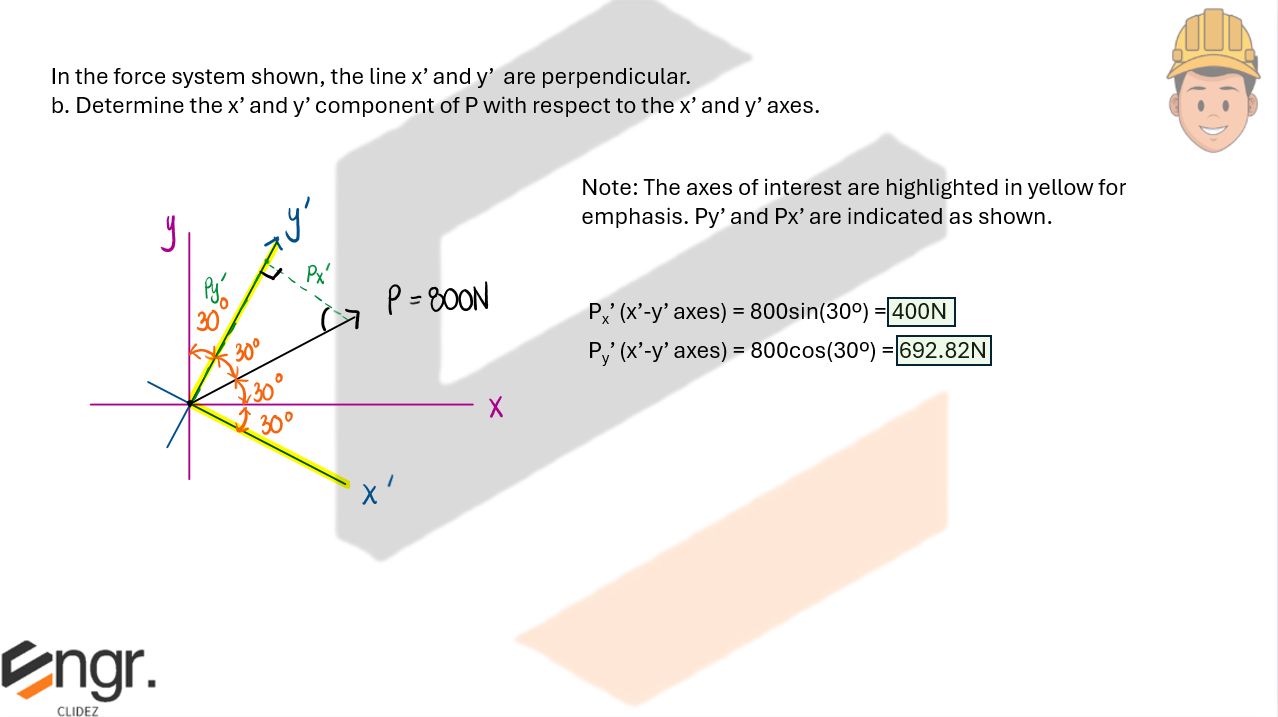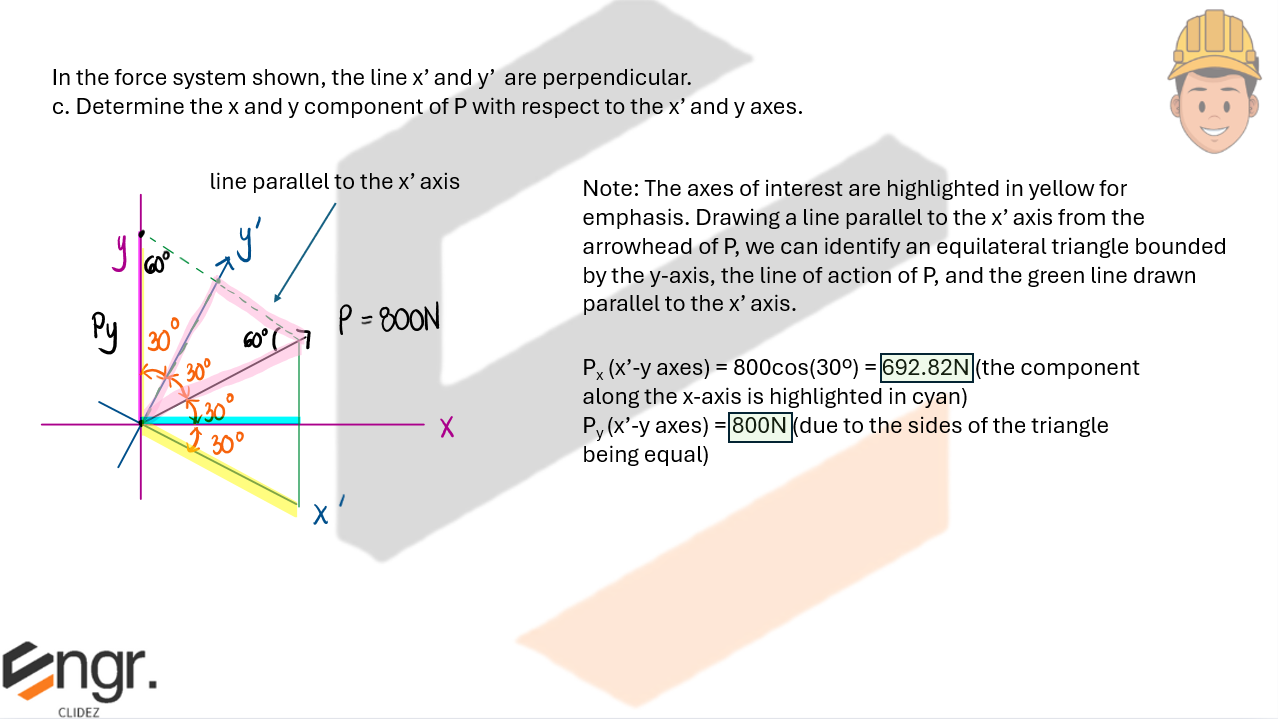In engineering mechanics, analyzing the components of forces along an axis is essential for simplifying complex force systems. A force can be broken down into parts—called components—that act along specific directions, typically the horizontal (x) and vertical (y) axes. This allows engineers to analyze the effects of each component separately. When the axes are rotated—such as aligning them with an inclined plane or a structural member—the force components must be recalculated relative to the new orientation using trigonometric functions. This method is especially useful in structural and mechanical systems where forces do not align neatly with the standard coordinate axes. Understanding how to resolve forces along both original and rotated axes is fundamental for accurate equilibrium analysis, design, and safety assessment in real-world applications.
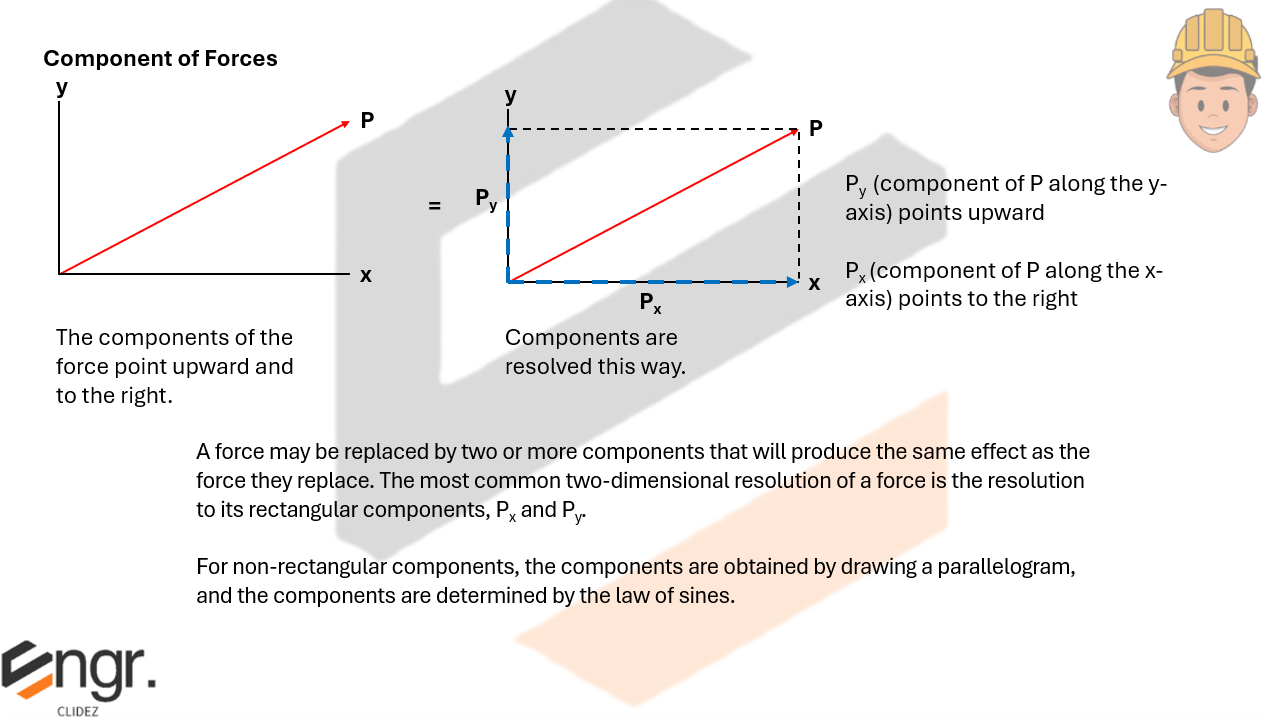

Refer to the image shown:
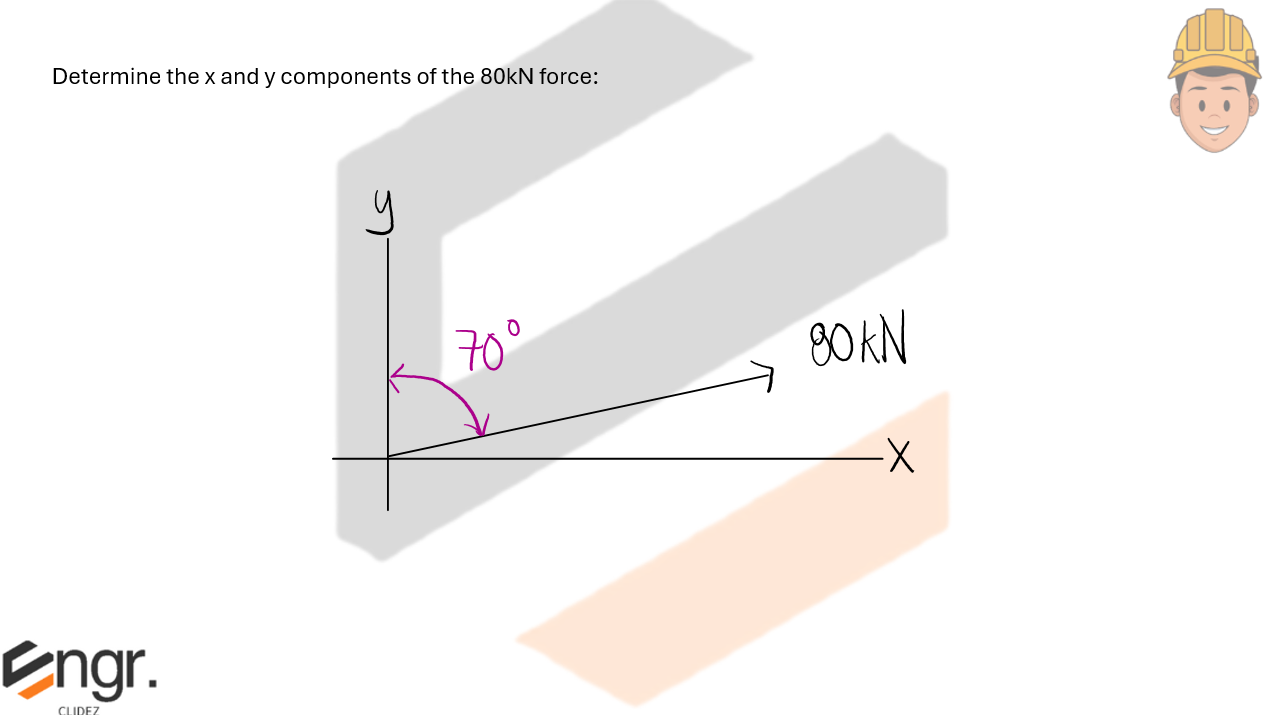

See images:
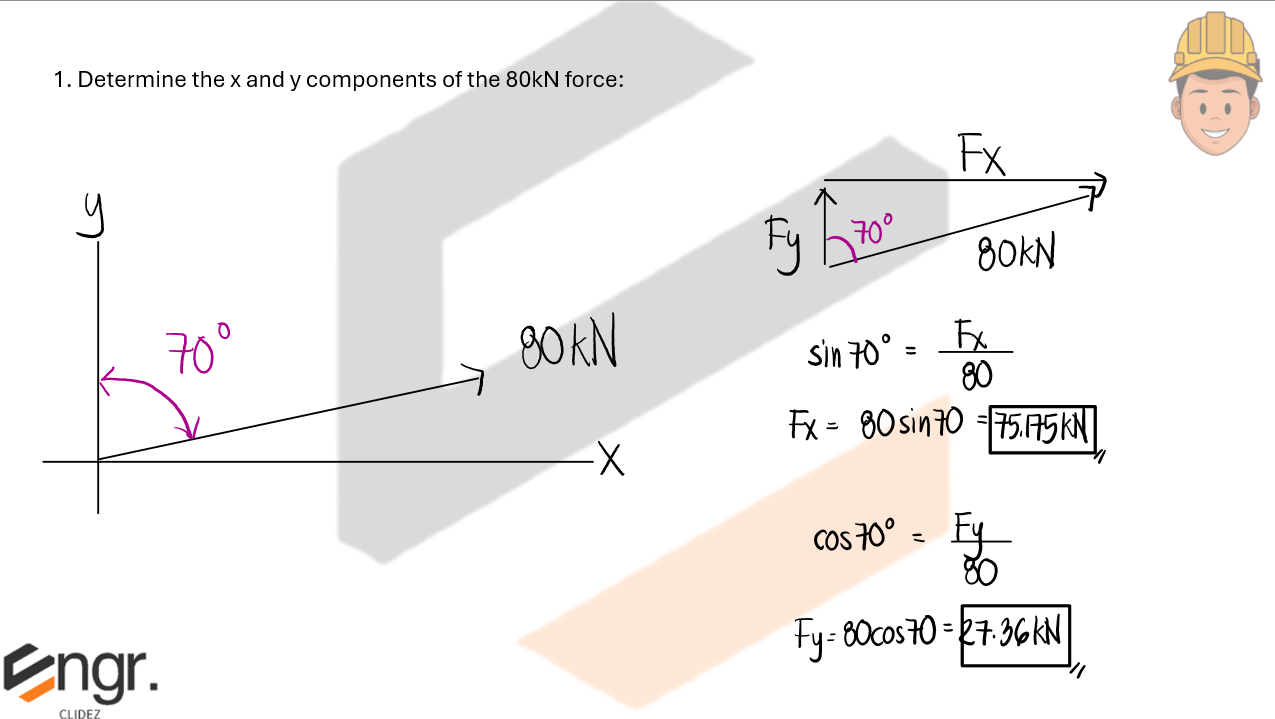


Refer to the image shown:
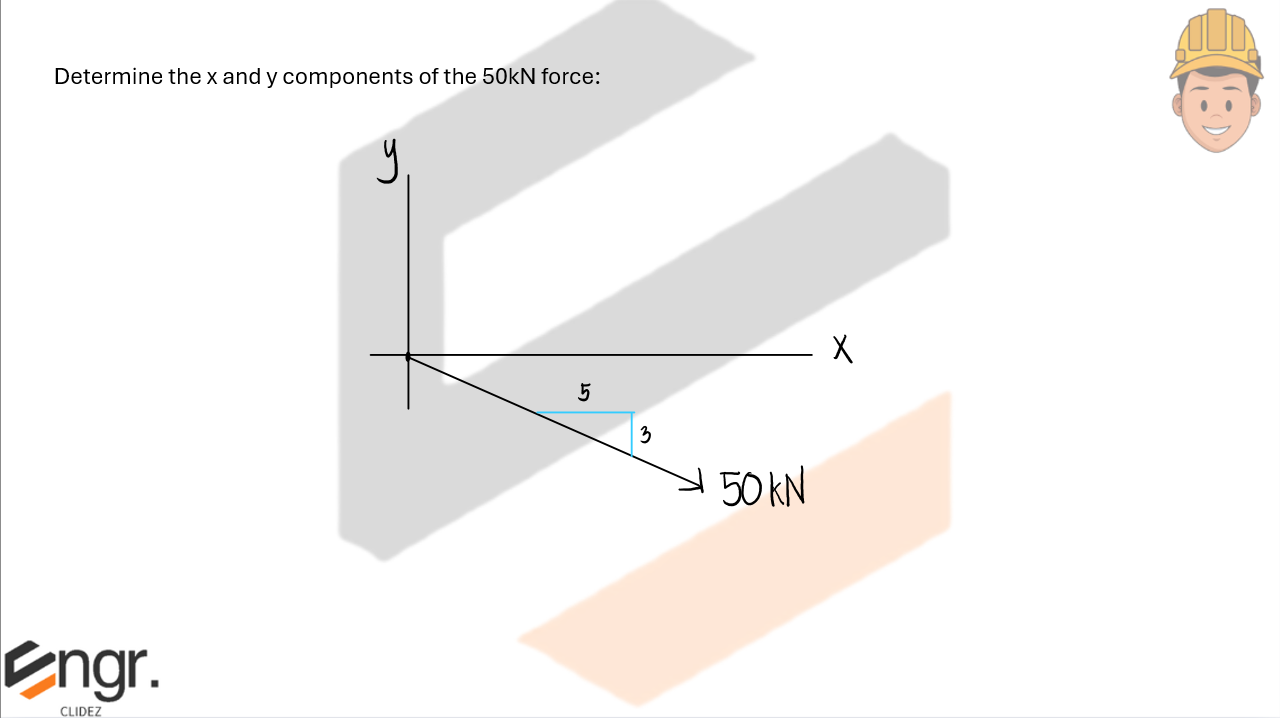

See images:
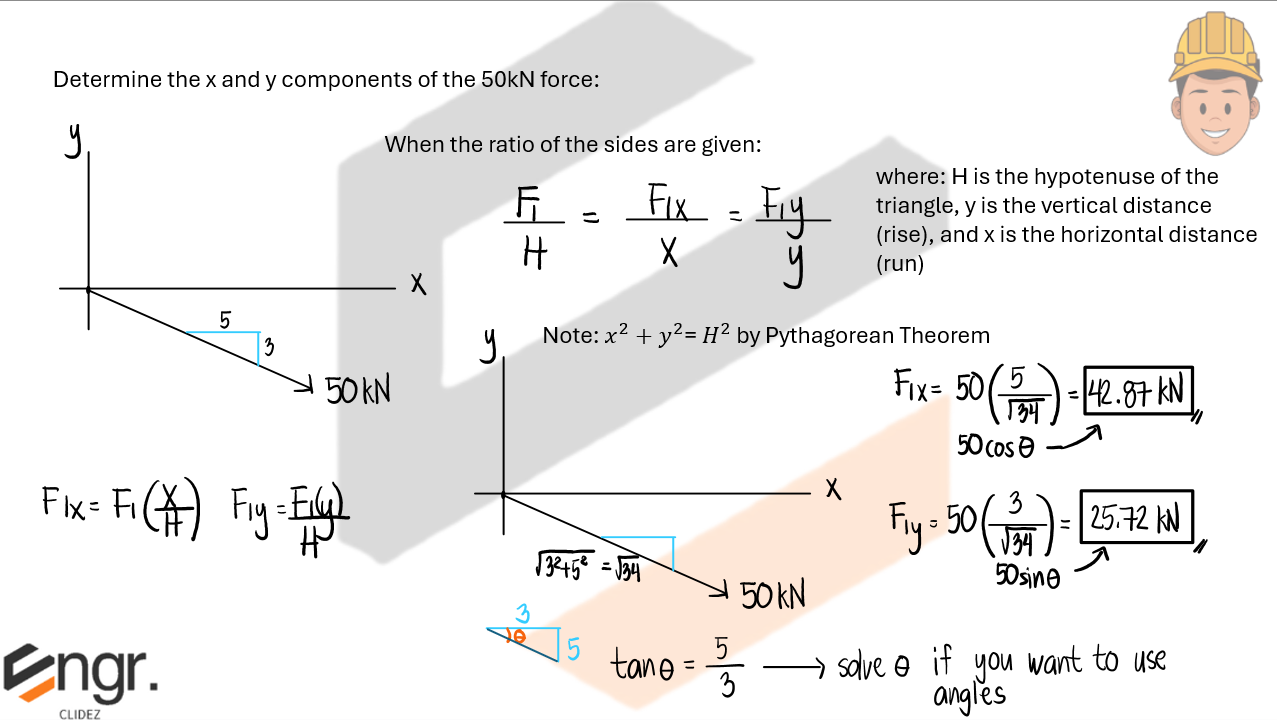


Refer to the image shown:
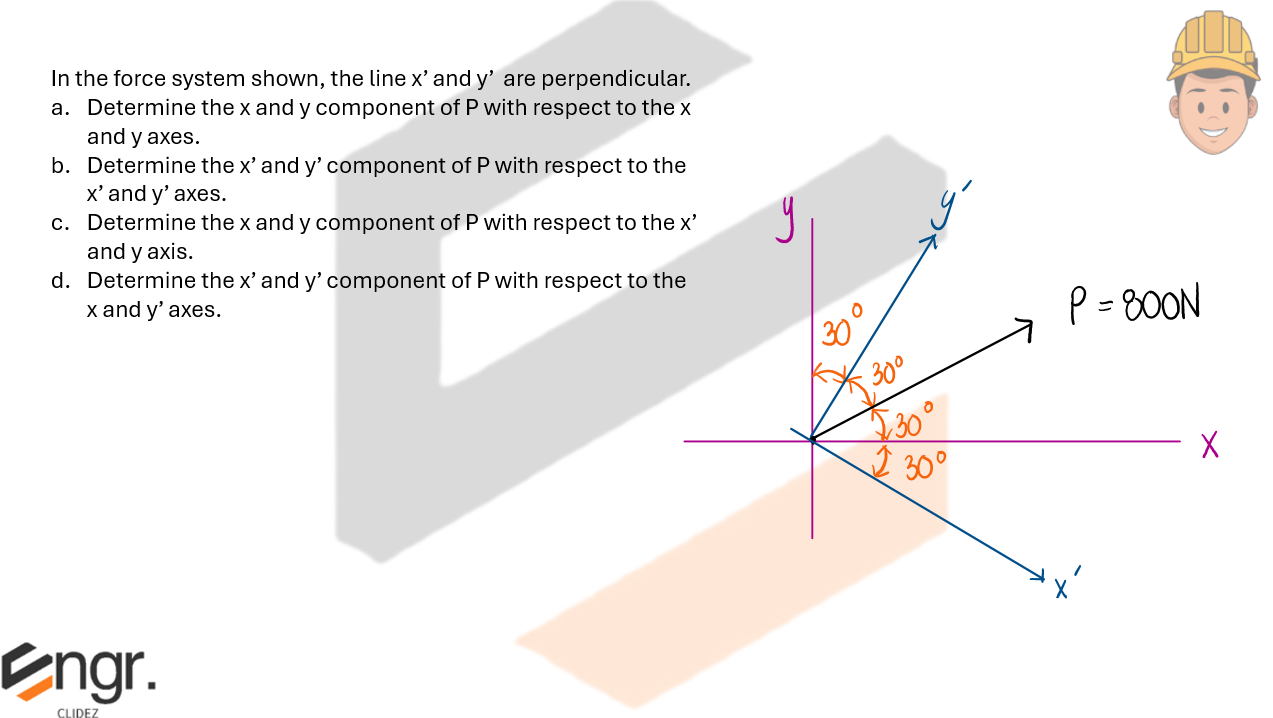

See images:

